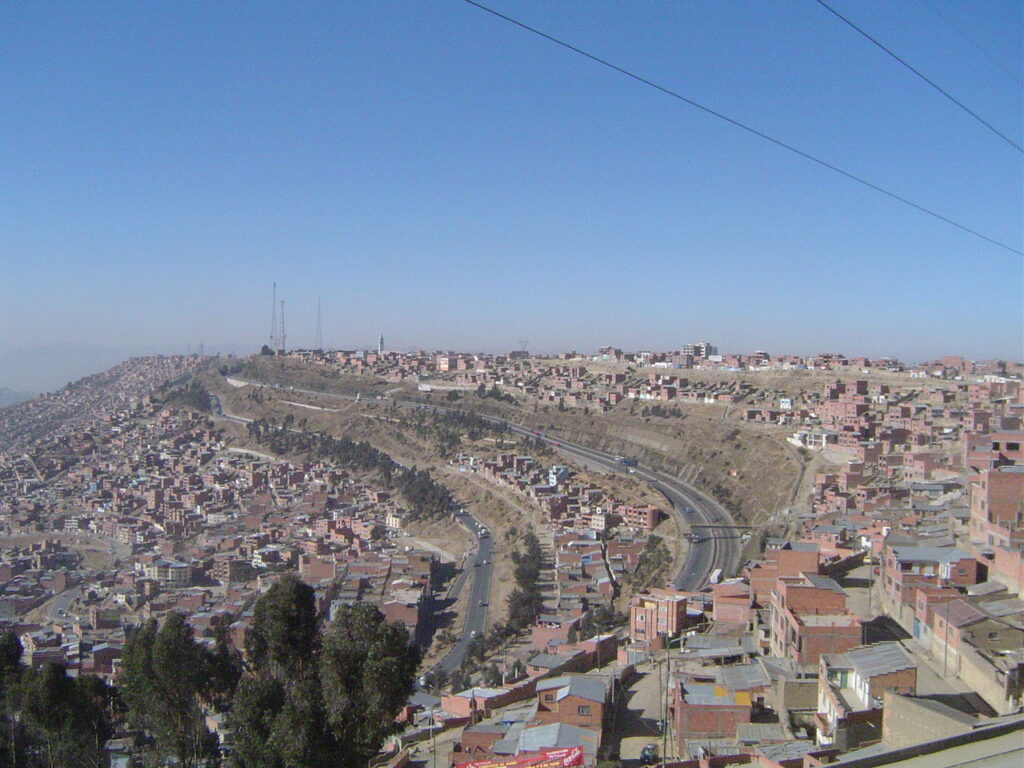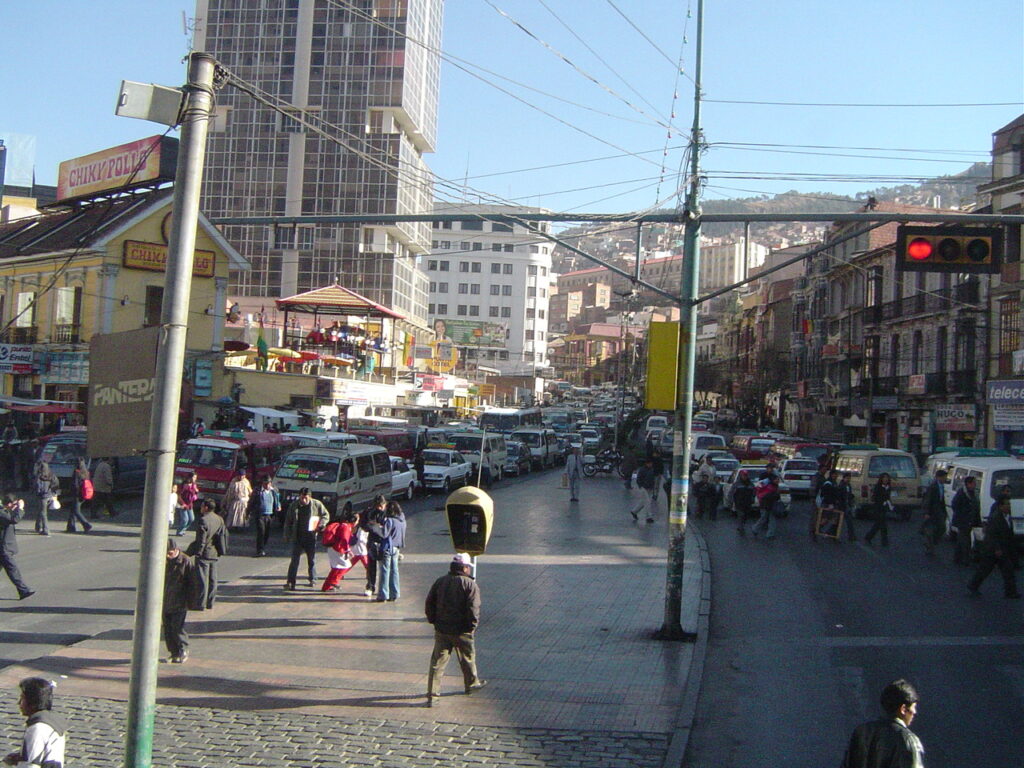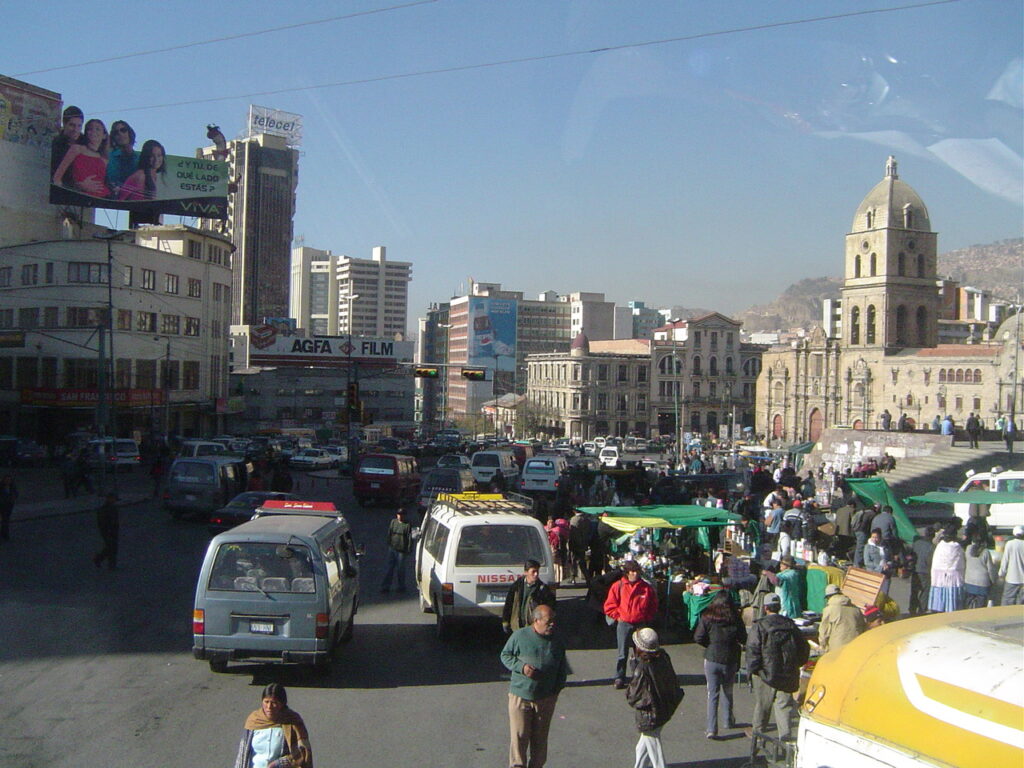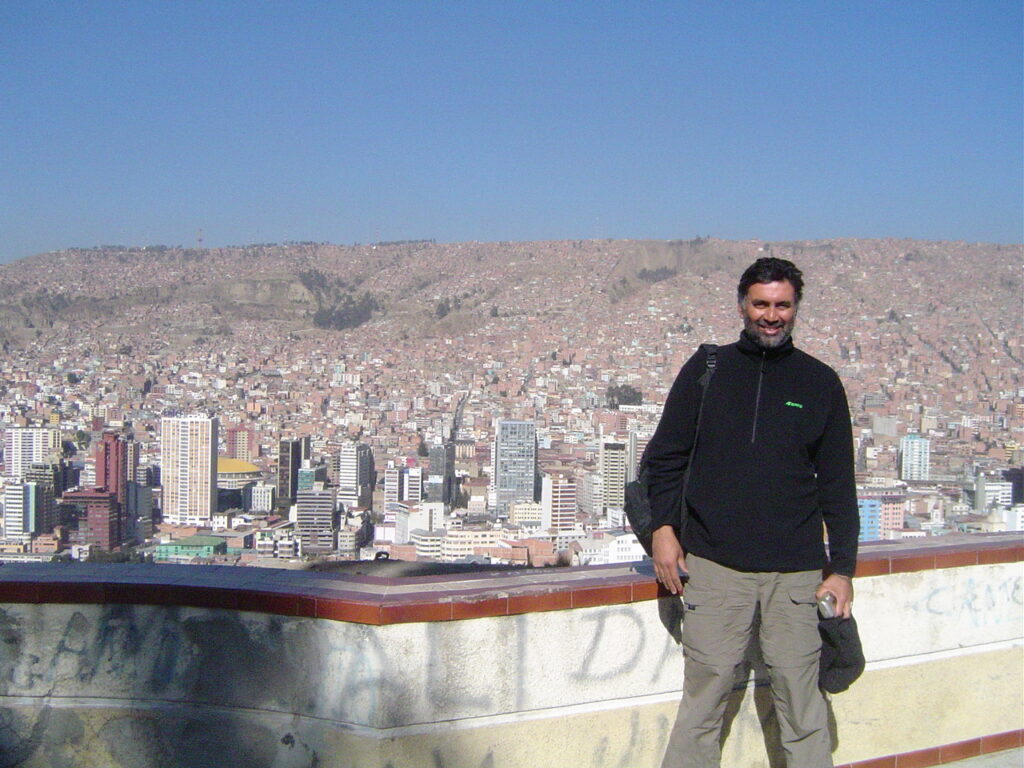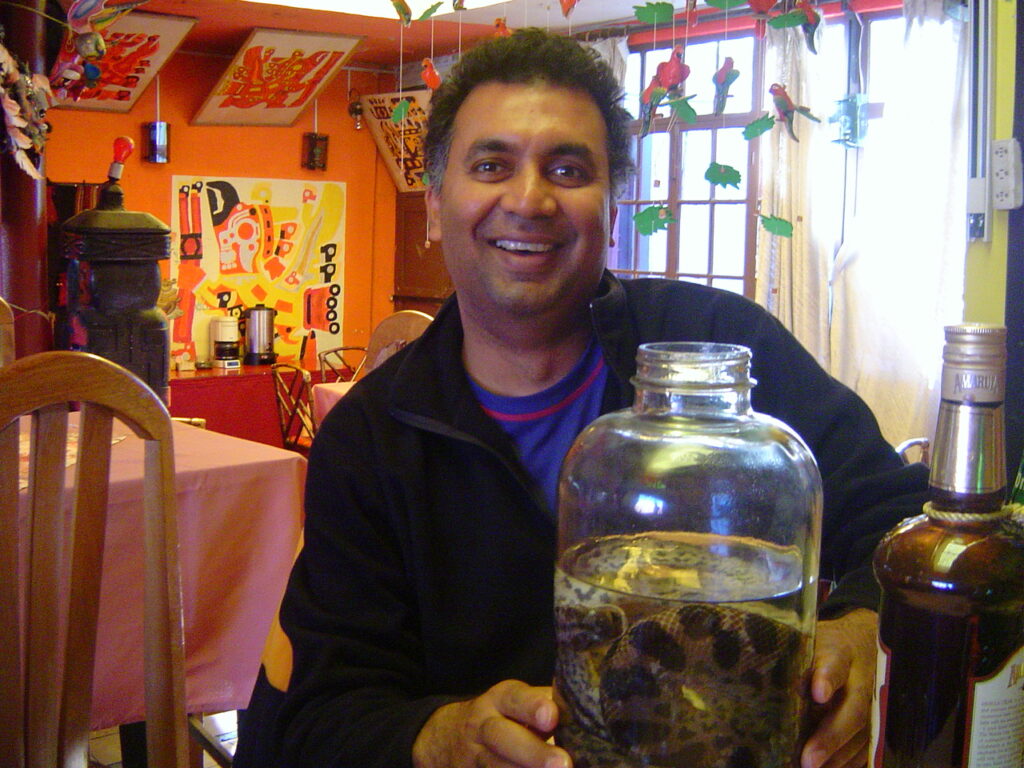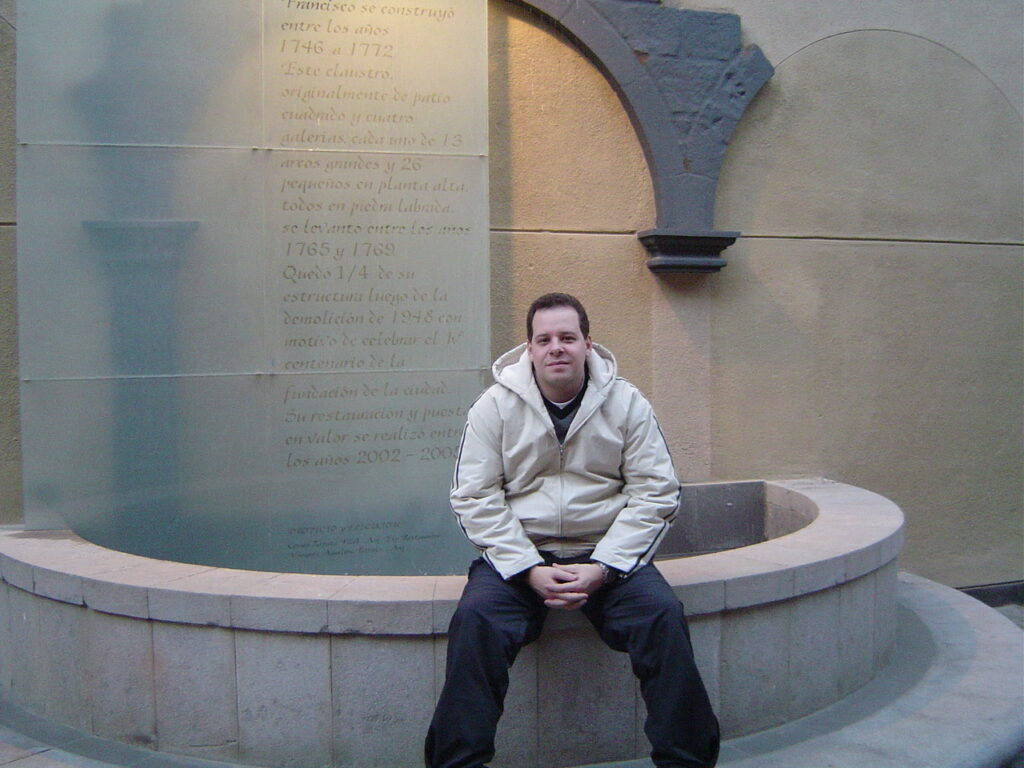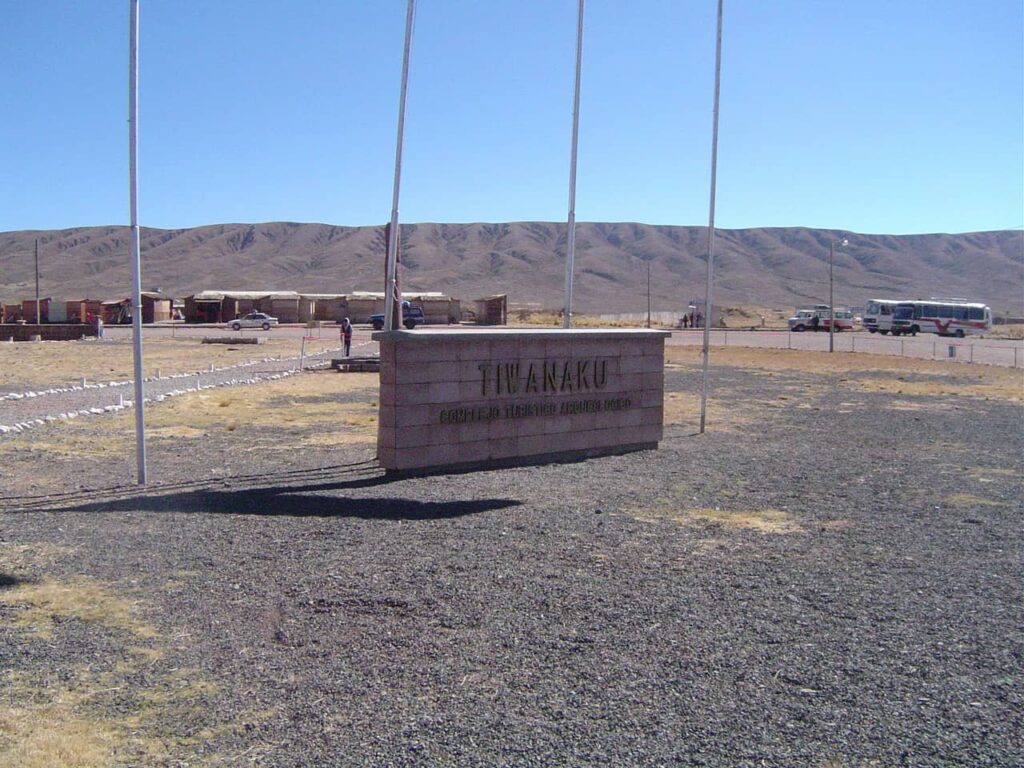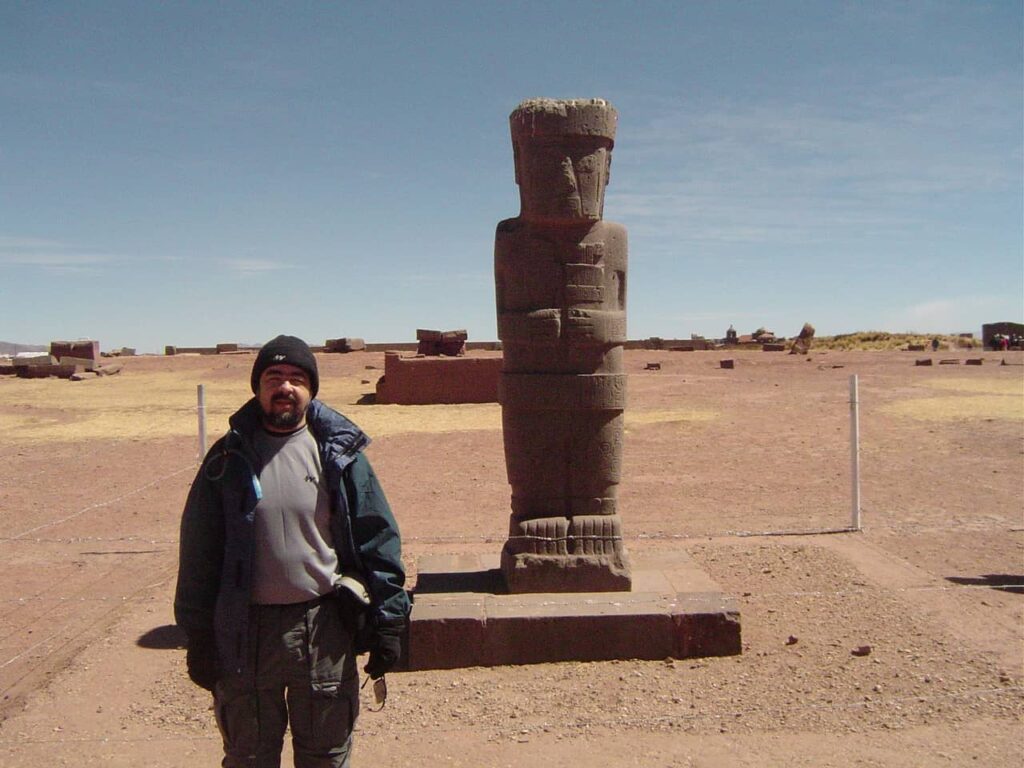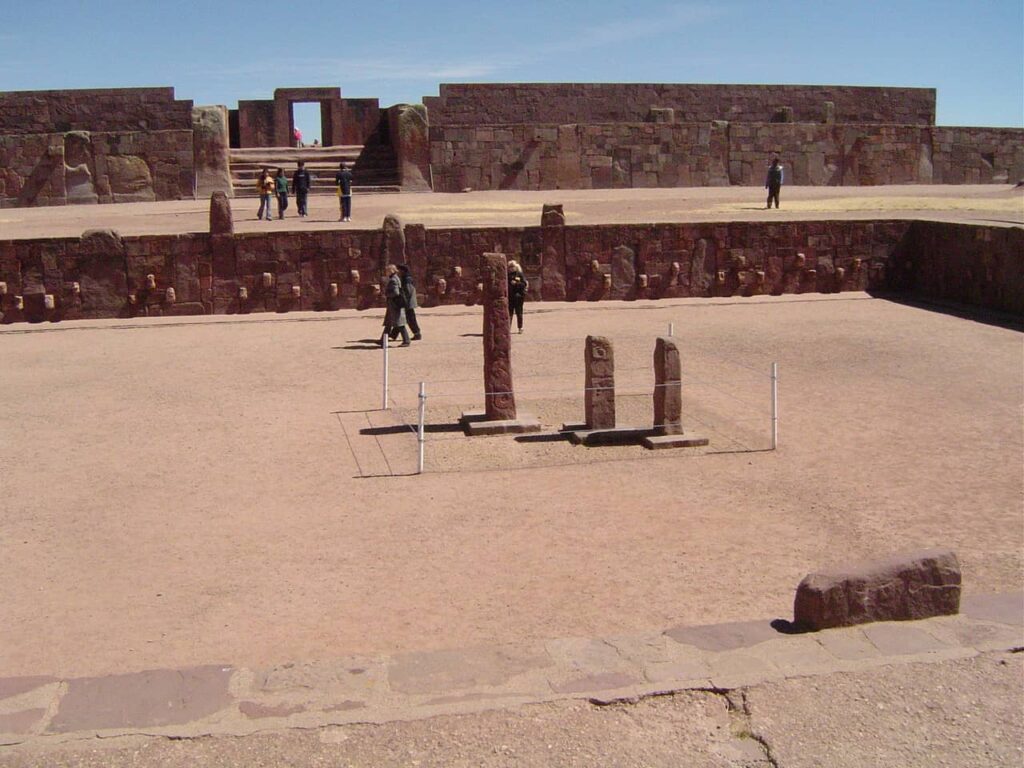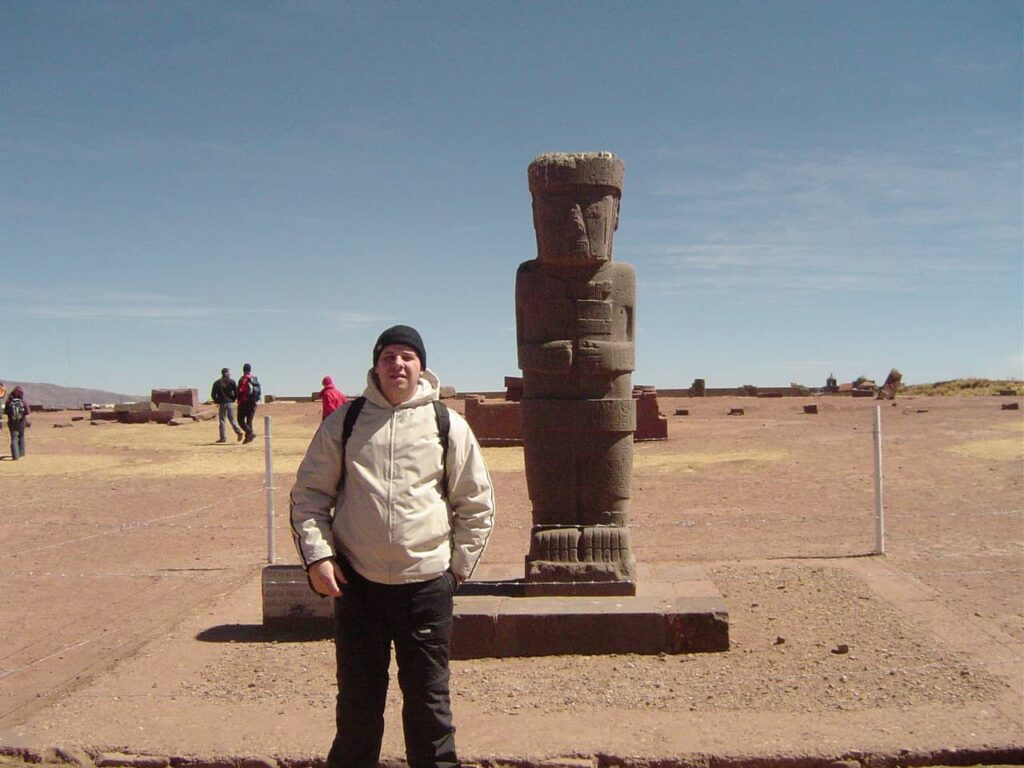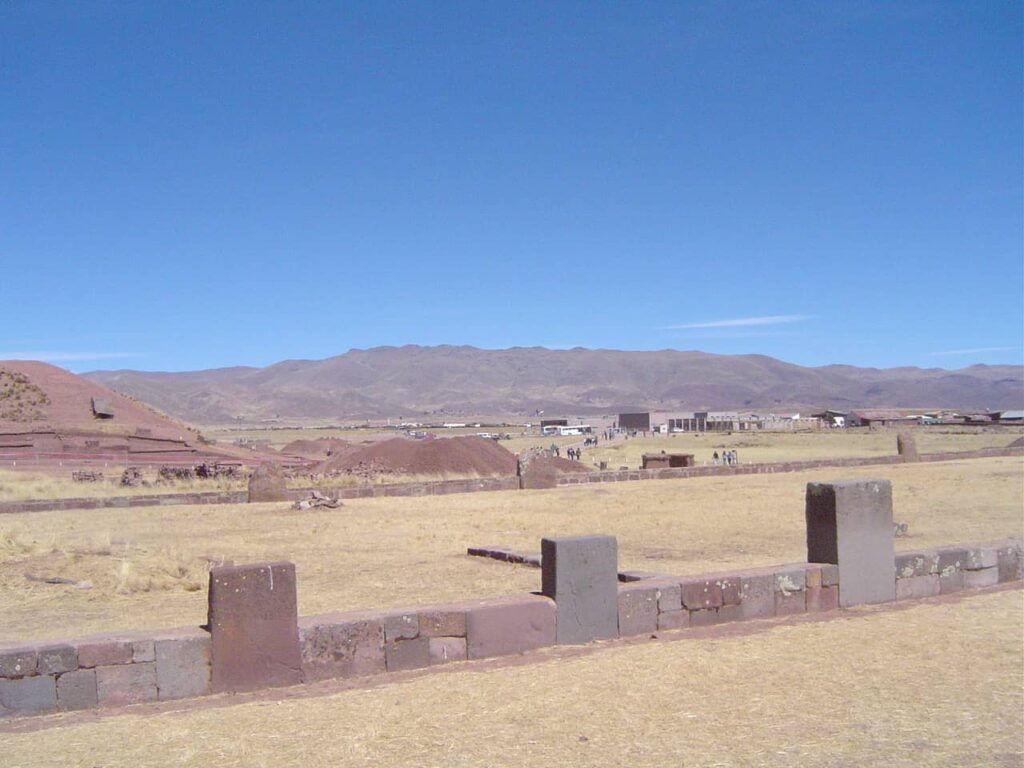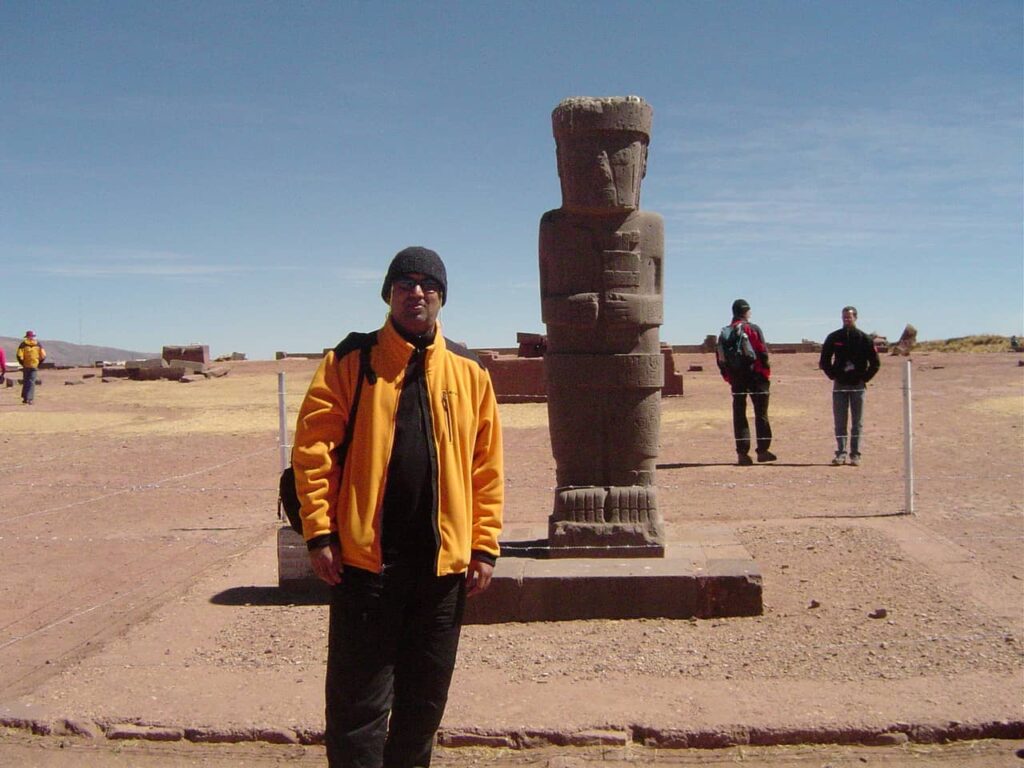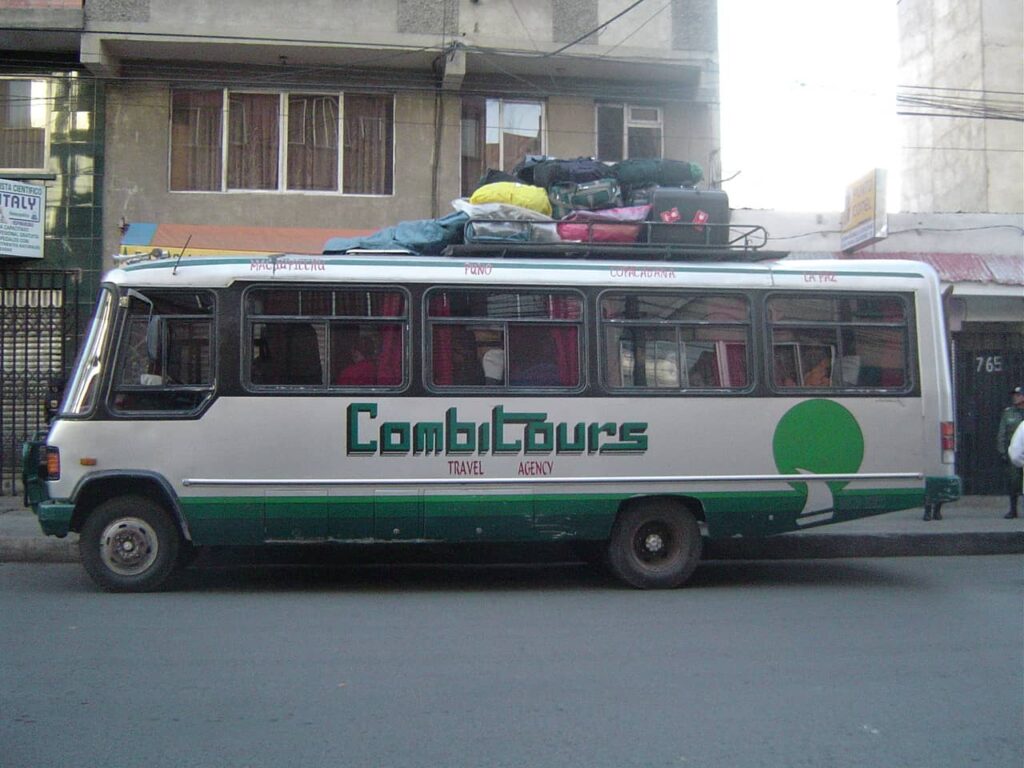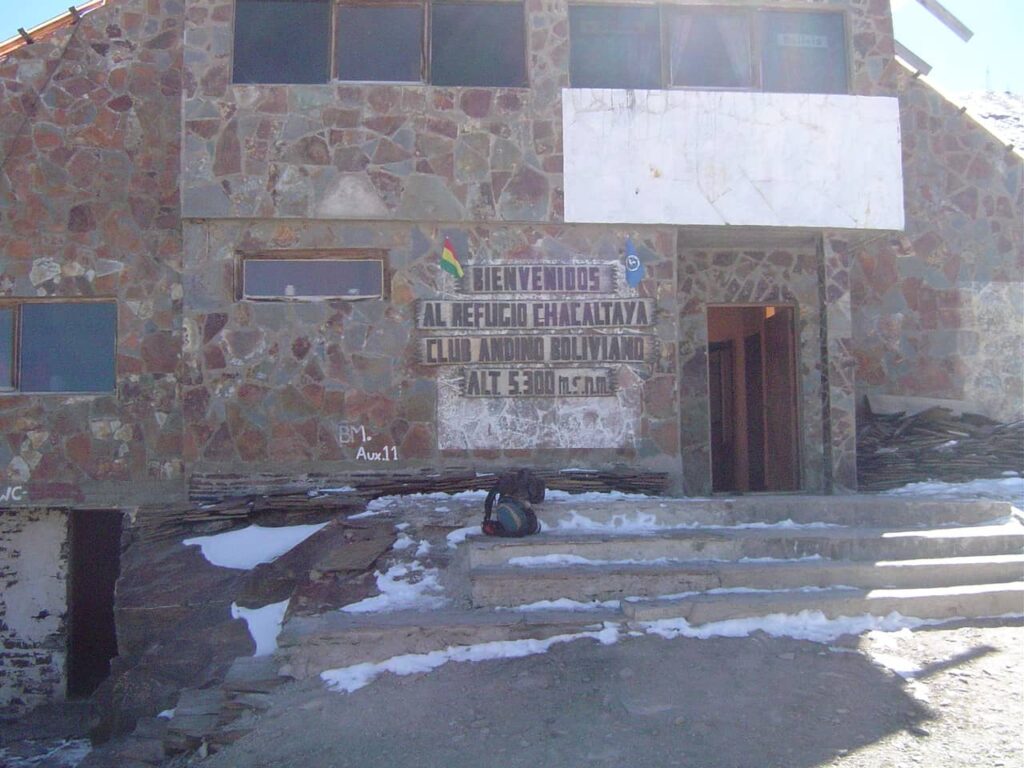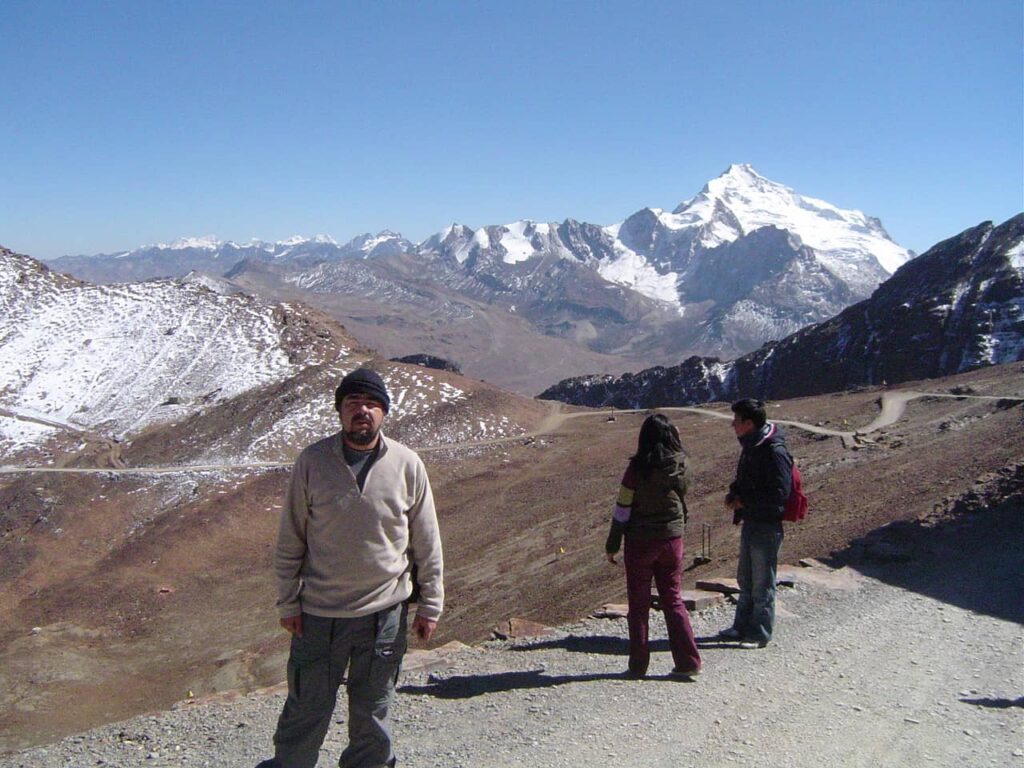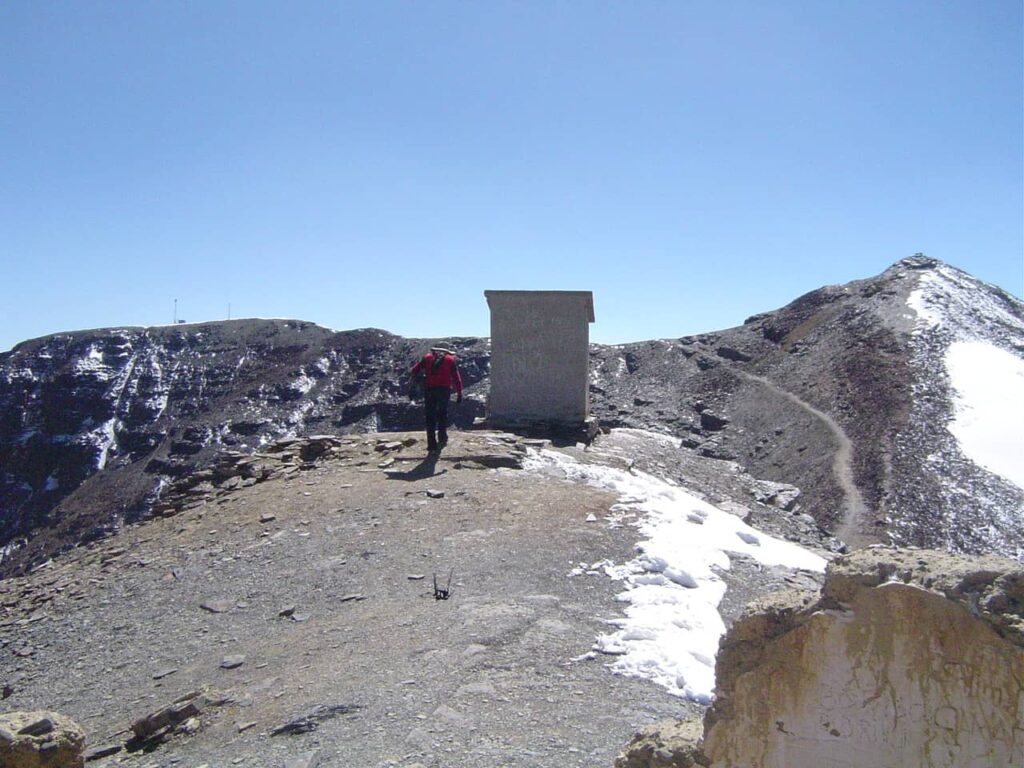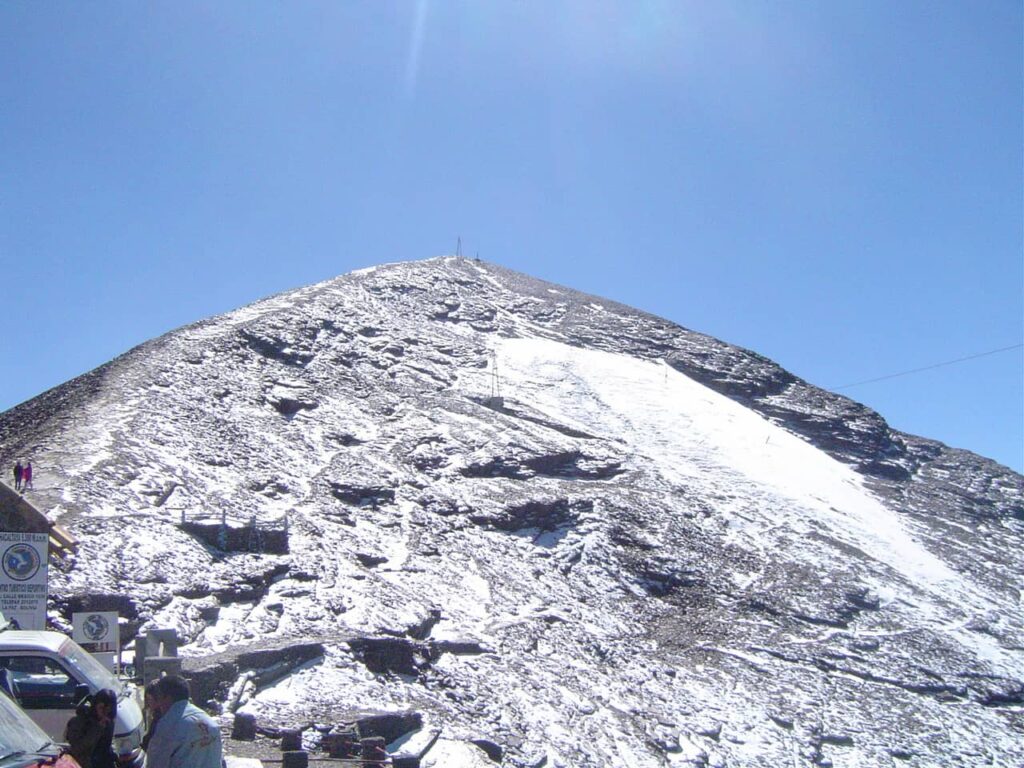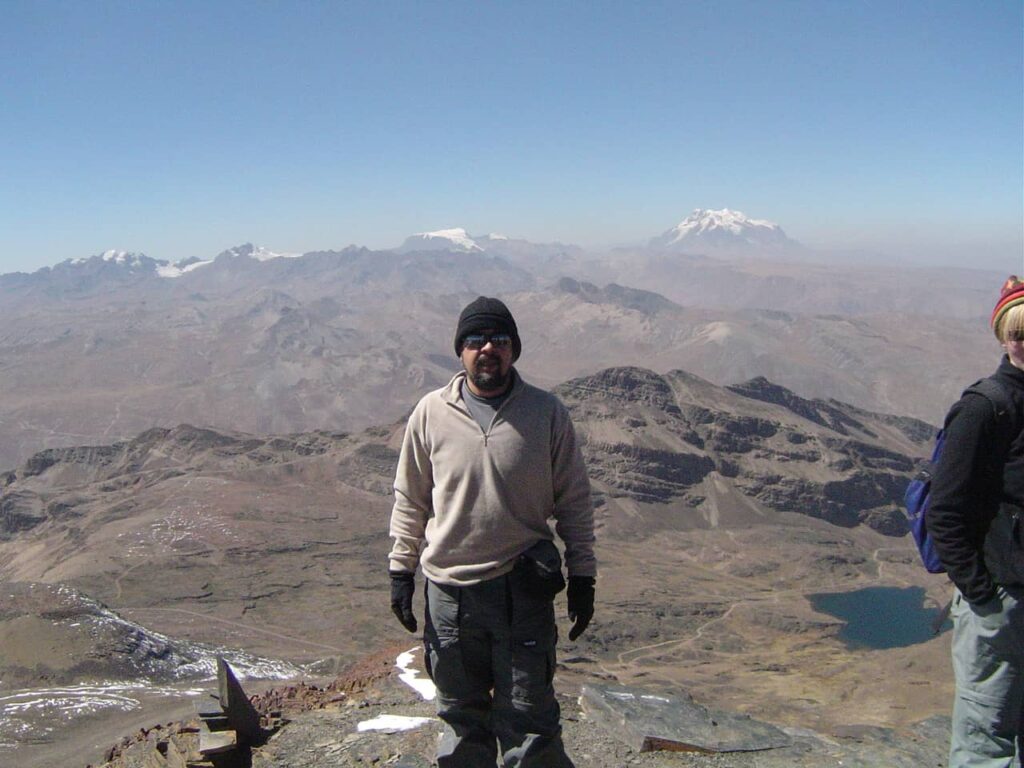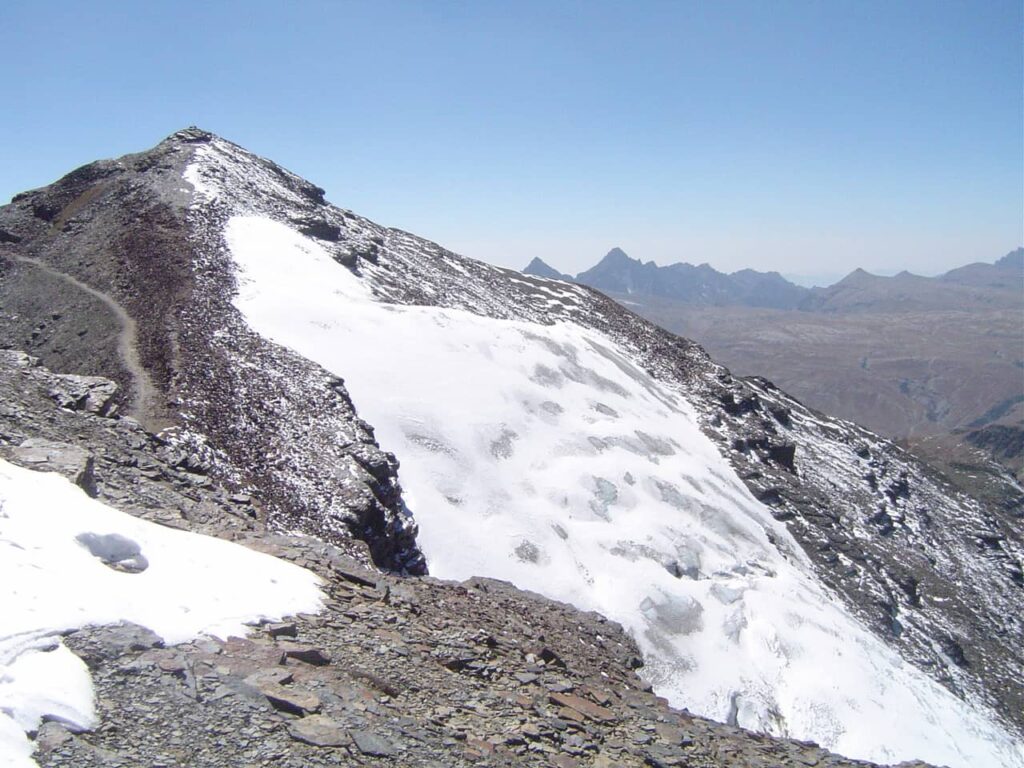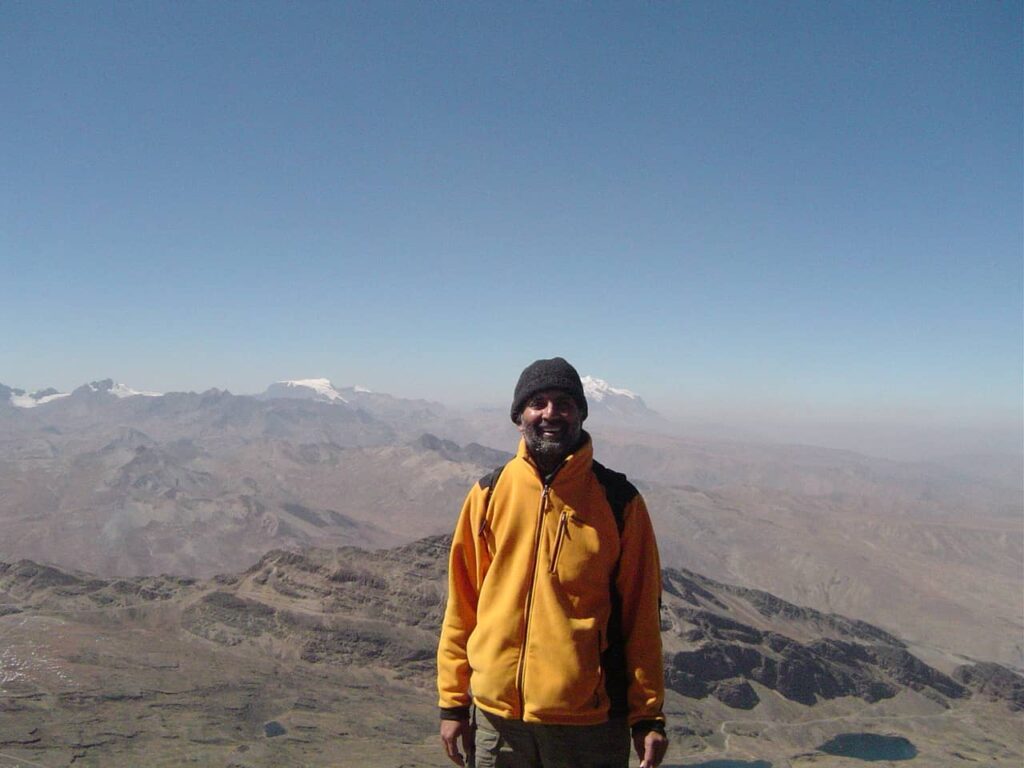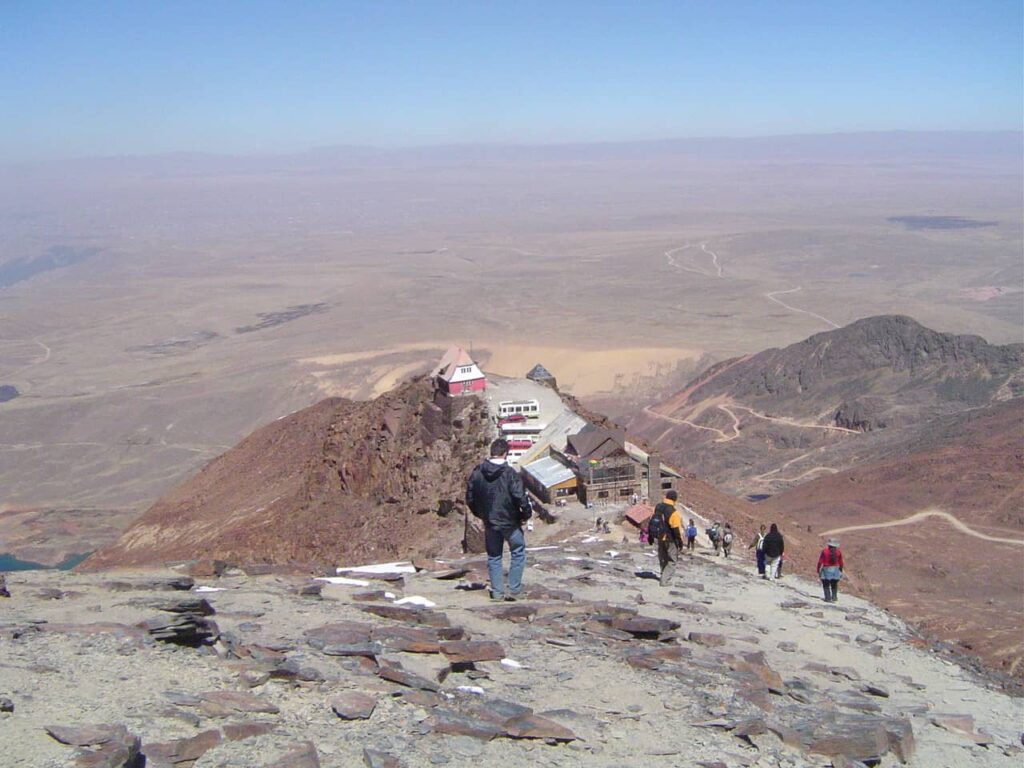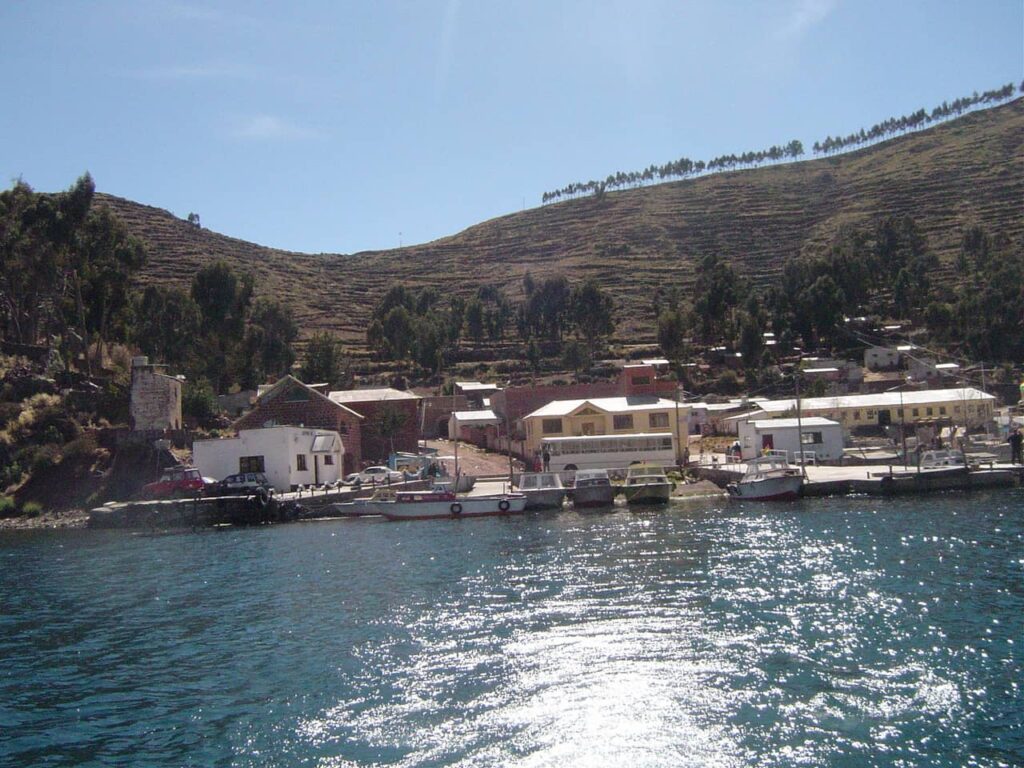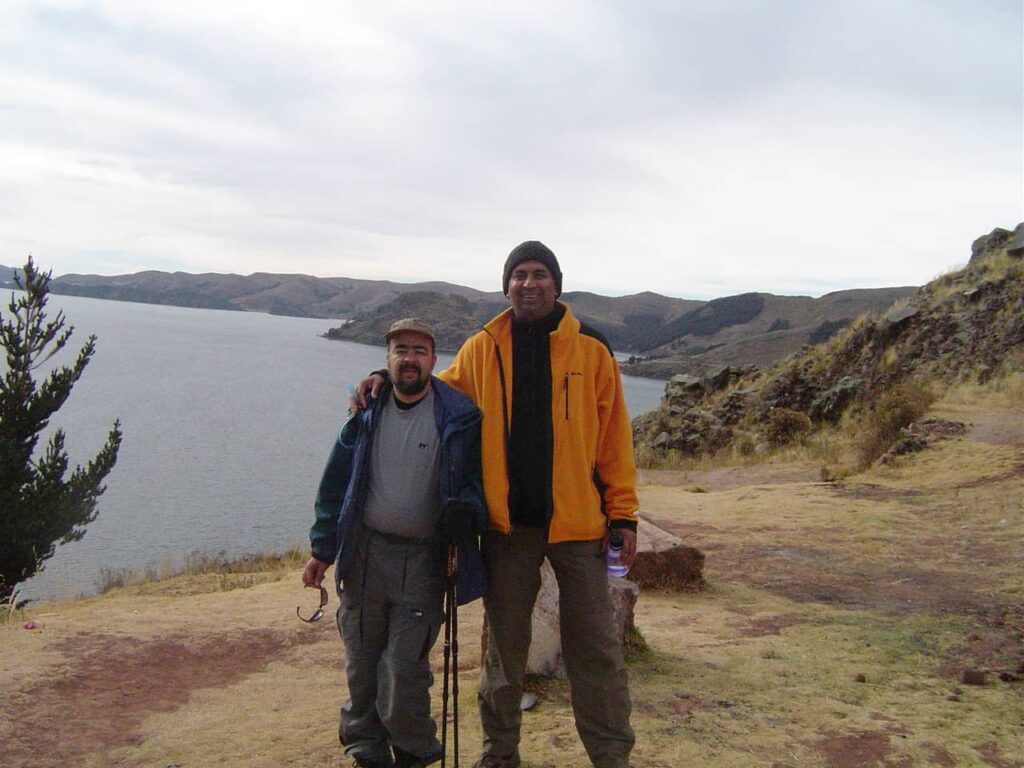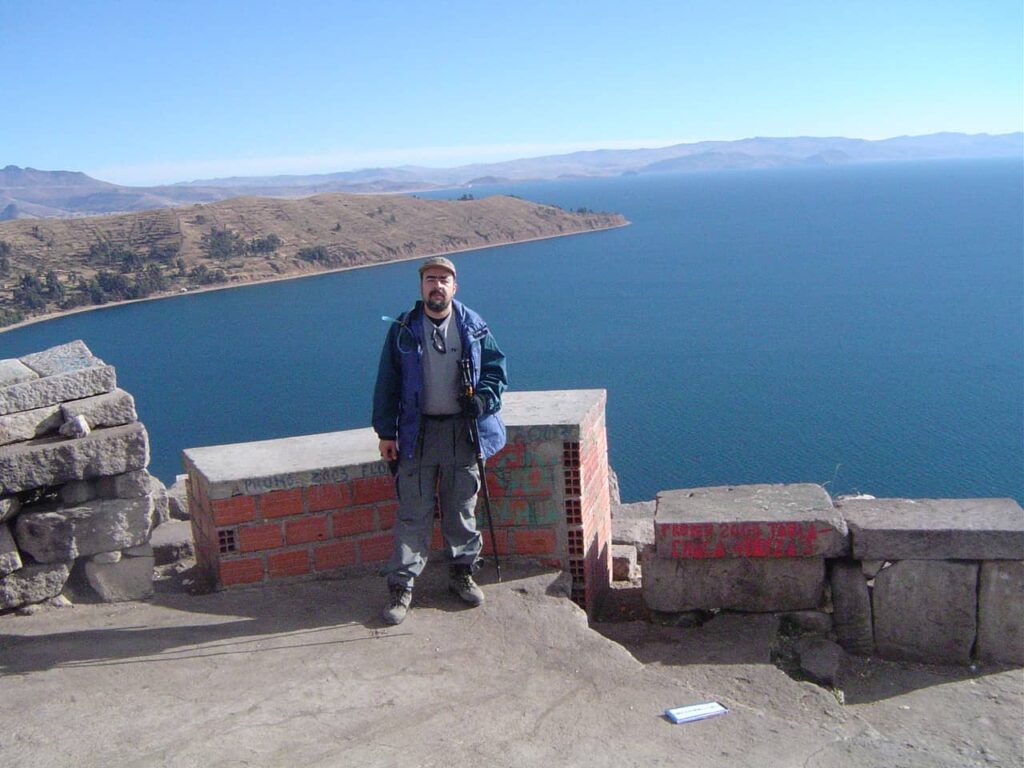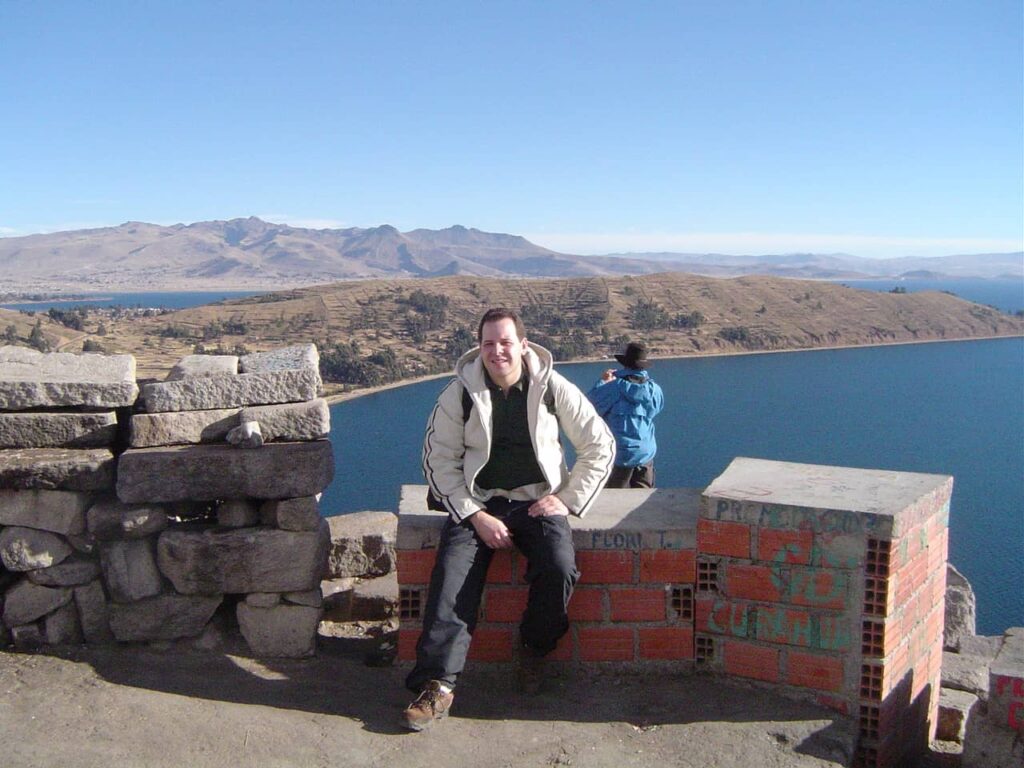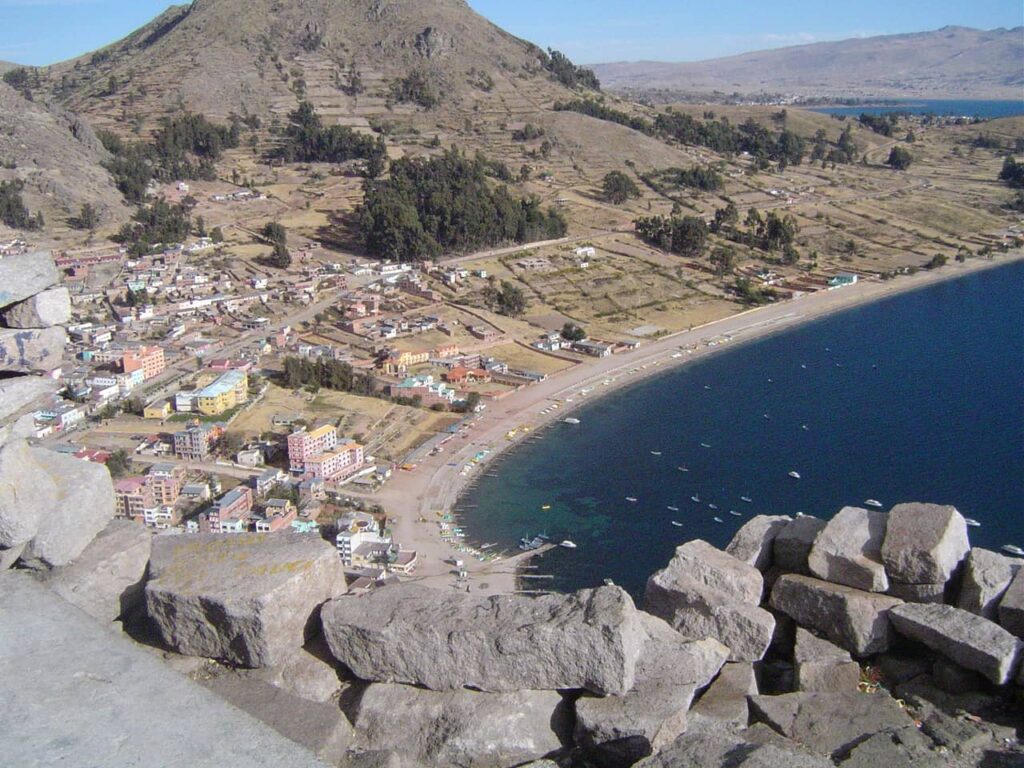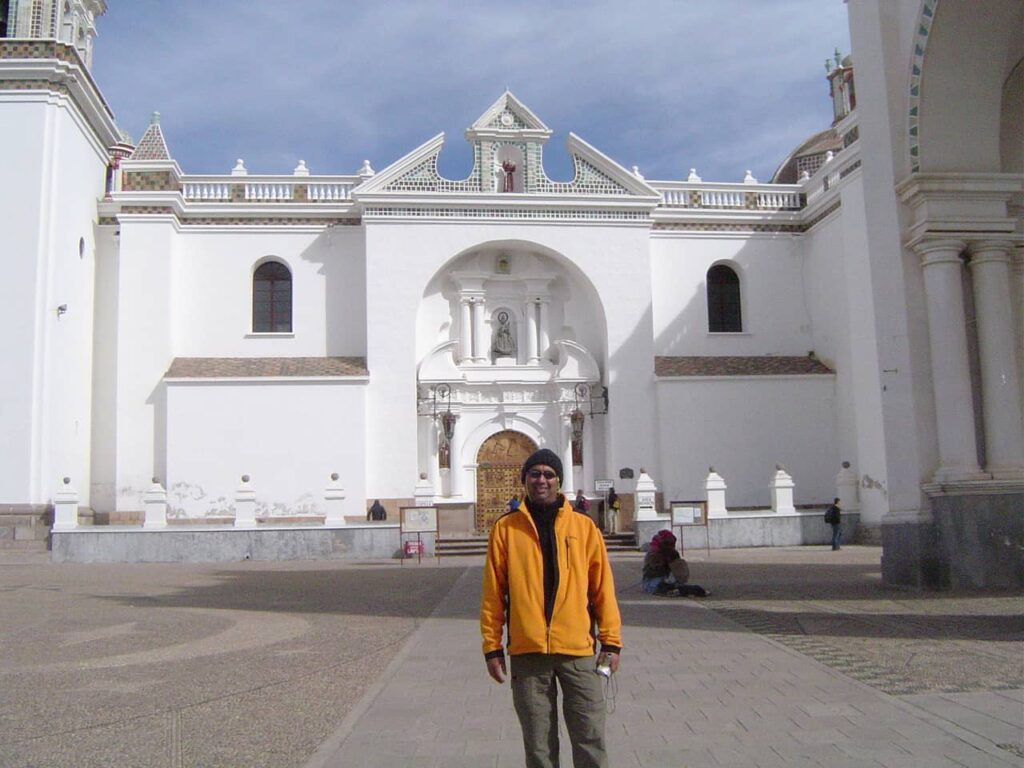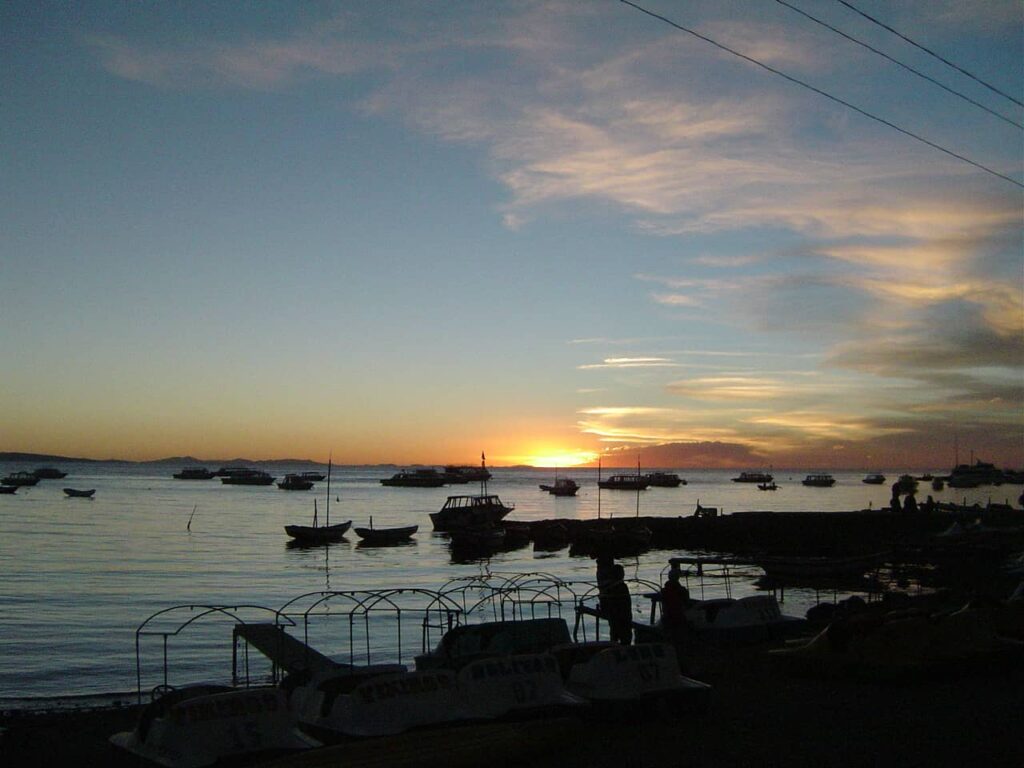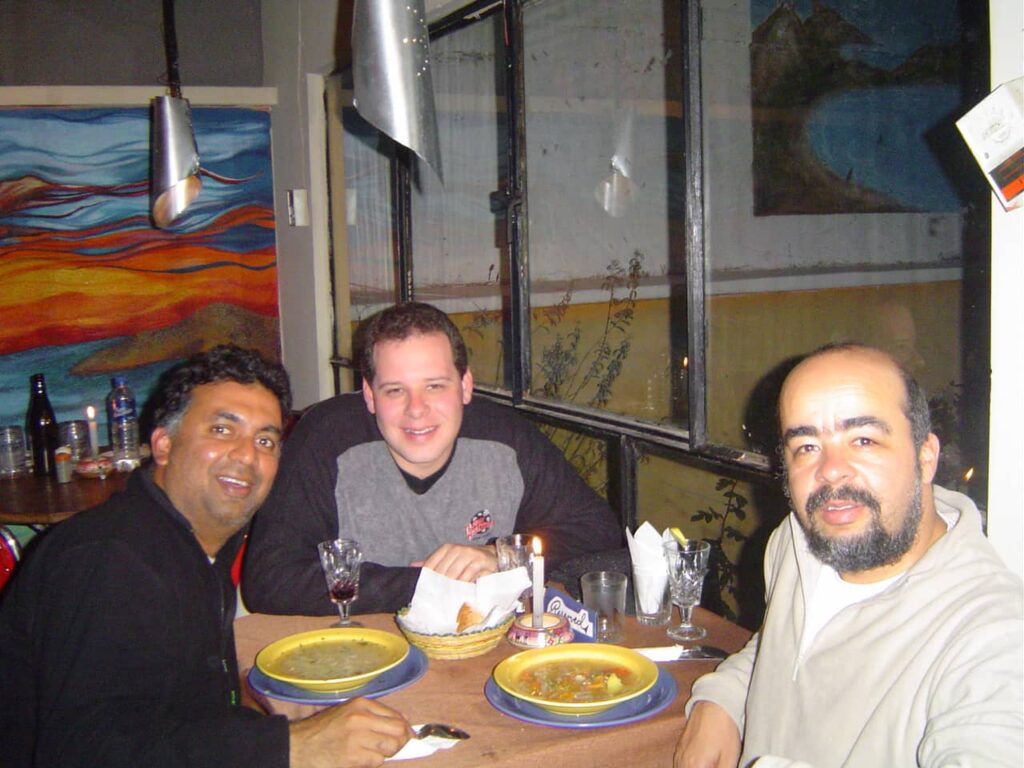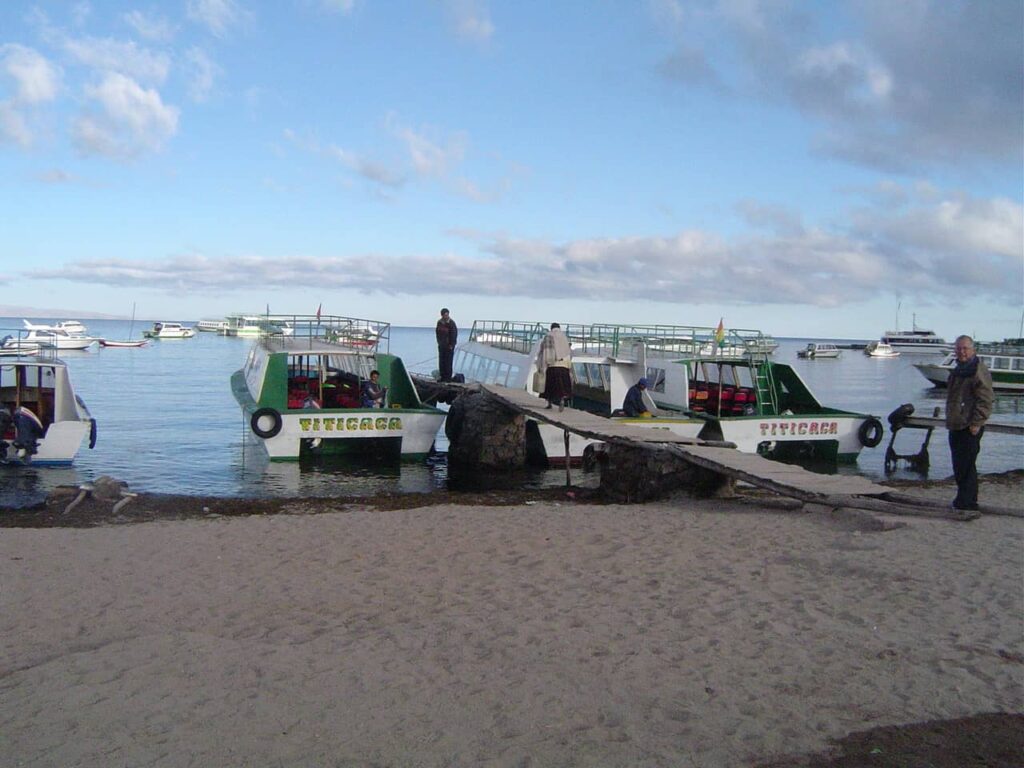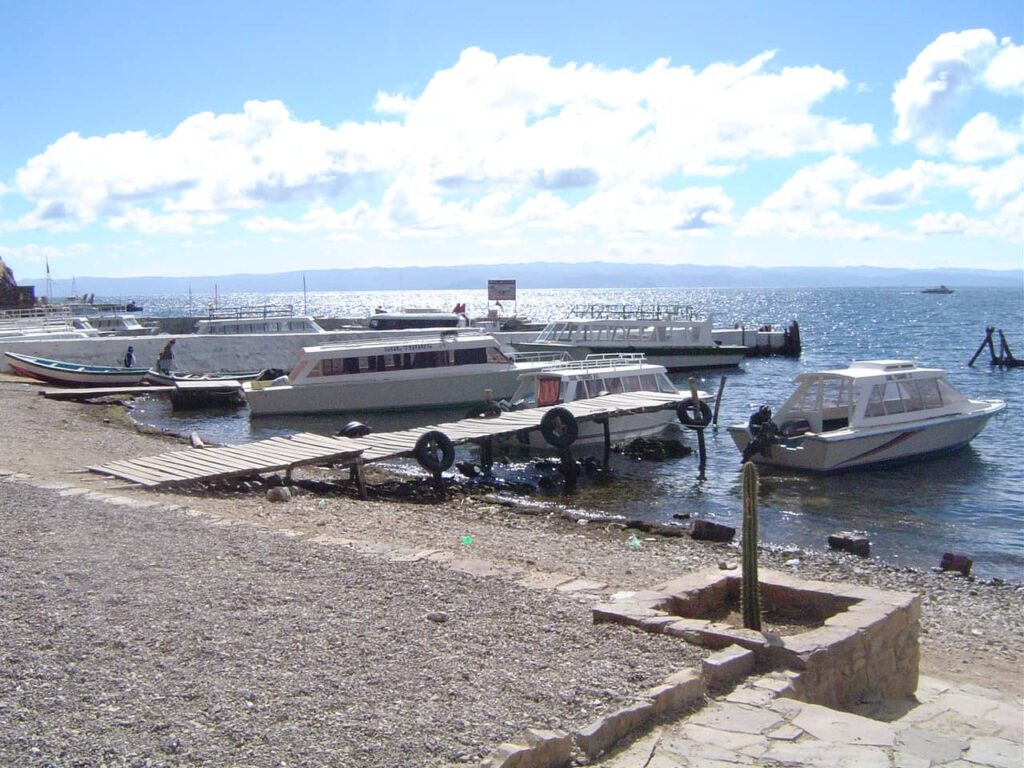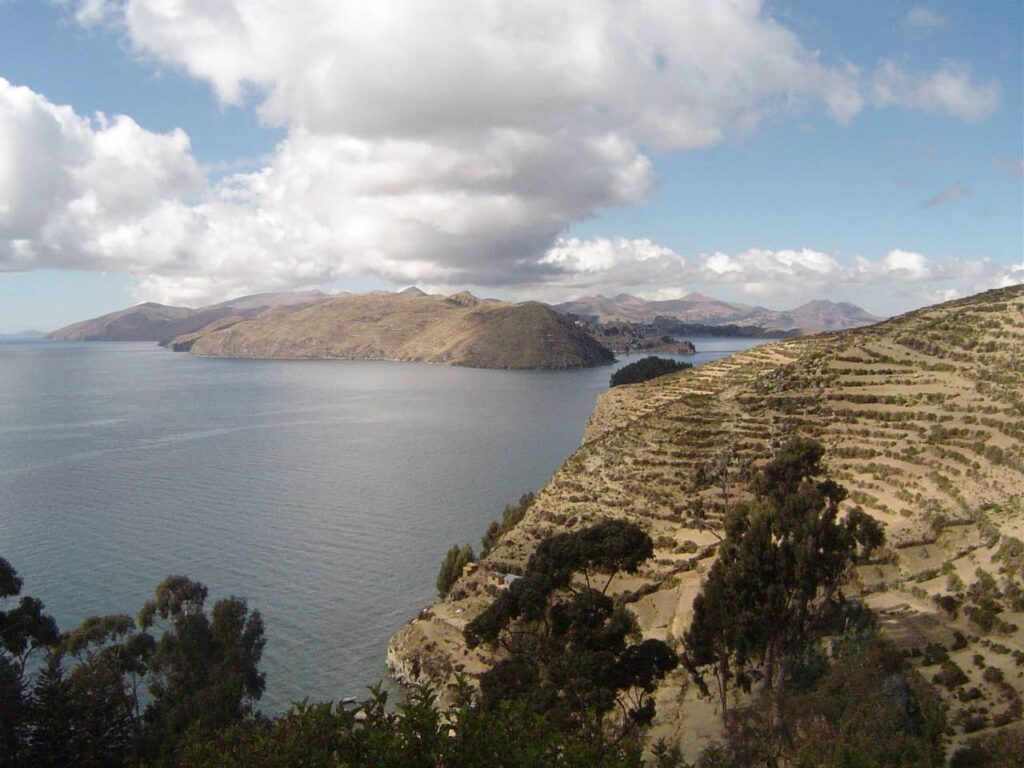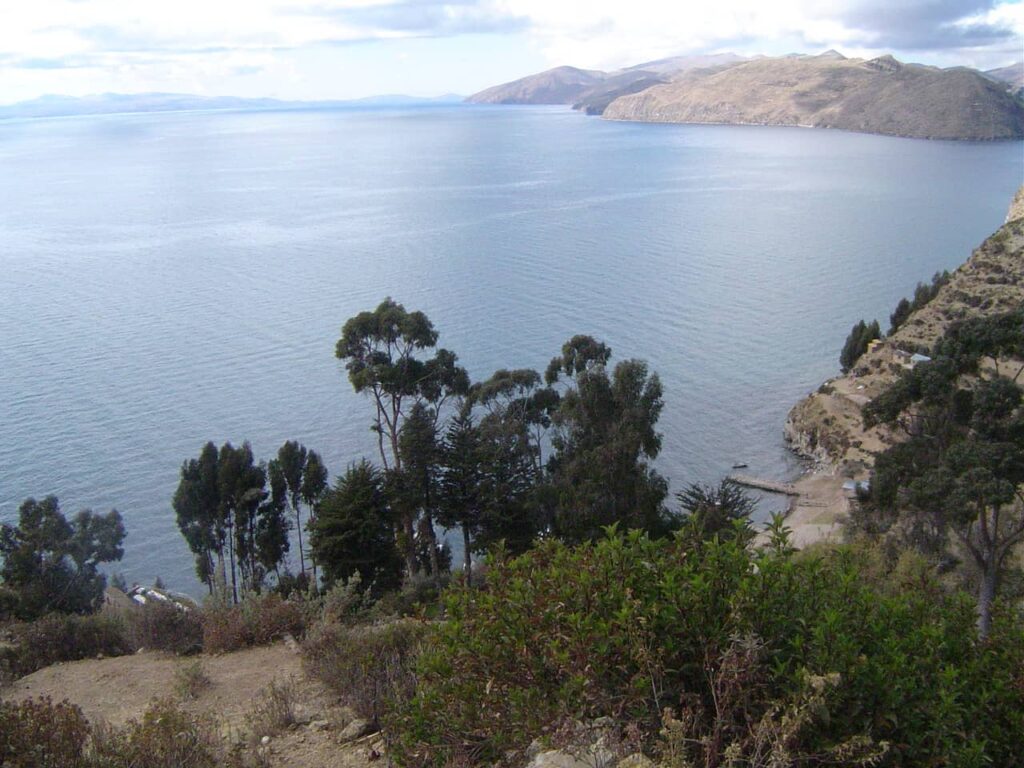Home » Destinations » La Paz
Lapaz
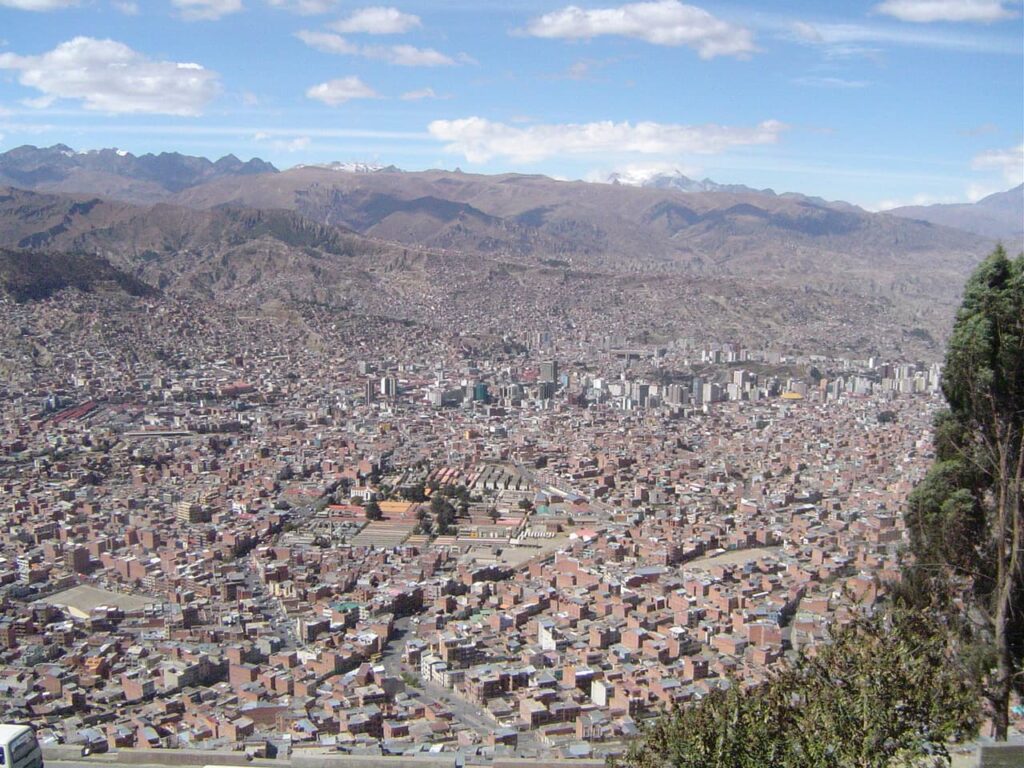
First backpacking trip
This was my first backpacking trip.
For those who know me, they know that I always liked to travel, but until 2003 I was a typical tourist using a travel agency, tourist bus, etc.
In 2004 I started looking for alternatives and my first trip outside the 100% controlled scheme was to Jericoacoara (see here)
After this trip, I was looking for what to do and I discovered the backpack and the best in South America and going to Machu Picchu.
As I really like to plan and I have my quirks, I created a route to go to Machu Picchu, at the time the most Brazilians with backpacks were to use the death train.
After some time that should have been spent, plus some of my quirks, like not being in the same place twice, I created the script.
Go by plane to La Paz and land, go to Cusco, Machu Picchu, Arequipa, go down to Chile, go to San Pedro de Atacama, go up to Bolivia via Salar de Yuni and return to Lapaz.
I invited many friends to go on this adventure, but in the end, Raul who worked with me in the office, and another friend Ranji who worked in the New York office decided to go.
None of us had the experience of the places we were going to go and for me, it was a totally unknown world and there was no internet, like today, everything was much more difficult.
Communication was by telephone (very expensive) and the most technological was emails.
Well with all the information possible off we went.
Raul and I left Brazil and Randi left New York to meet in La Paz.
I went in a mix of fear, anxiety, challenge and I don’t know what else.
When the plane started to enter Bolivia it was like being in another world, I had not seen anything like it in my travels.
The first view of the mountain range was unforgettable and frightening, as I had a vague idea of the altitude problem, but I had never lived the experience.
We arrived at El Alto Airport, which is at an altitude of 4,100 meters.
The first impression was that the plane stopped in the air, as it started to descend and landed immediately.
The shock came as soon as I opened the plane door, about 10 minutes passed and I started shaking and shaking a lot.
I had to stop in the middle of the hallway because I couldn’t stand up.
I stayed about 20 minutes in this situation and soon after I was able to walk, it was a strange moment.
Over time I adapted a little.
La Paz
Raul was better and we managed to get a taxi to the city. I soon felt better, as La Paz is at 3,600 meters.
We went to the hostel we booked and there we had our first coca tea.
For me it has always been very bad and has no effect, what I later learned is that how you are and if you drink a lot of water helps with acclimatization.
At the hostel, we met Ranji, personally for the first time. We had only communicated by phone, email, etc. at the time he had no video calls.
He wasn’t well at all, the altitude was worse for him, as NY is at sea level.
Climbing the stairs was simply an ordeal.
But we were advised not to stay still, it’s always better to move around to acclimatize.
So we went to try something to eat and see the city.
We went to a bar and it was very exotic, with drinks that had several animals inside enjoying it. ECA.
Ranji liked the snake glass, with a drink that I don’t know what it was and didn’t even want to find out.
It was as much as we could on that day, we went to rest.
The other day, we went to see the city and take a walk. As we were still weak, we walked only in the center and in La Paz you can either go up or down, there is no middle ground.
One more day to acclimatize, but Raul wasn’t well and Ranji got better, I was like new, although on the climbs I went slower, but all the discomfort had disappeared.
At the time I didn’t know, but today I know that I’m one of the lucky ones who adapt very well to altitude. I only feel a little weak in the first few days and nothing else.
Tiwanaku
One more day to acclimatize and we went to Tiwanaku.
First we stop at the viewpoint, close to El Alto at 4000 meters to see La Paz.
A very barren sight. I’ve always been used to a lot of greenery, beaches, forests and I was impressed by the hardness of the place.
Everything is very cold, dry, without vegetation, a lot of stone.
For those who don’t know Tiwanaku
Tiwanaku is a pre-Columbian archaeological site, near Lake Titicaca, in the altiplano, at an altitude of 3,850 m, in the Province of Ingavi, Department of La Paz is one of the largest sites in South America.
Its age has many doubts, some saying that they are 17,000 years old and others 3,000.
It is the spiritual and political center of the Tiwanaku Culture that flourished into a planned city between 400 AD and 900 AD.
Surface remains currently cover about 4 square kilometers and include decorated ceramics, monumental structures and megalithic blocks.
The end of this strong and peaceful civilization led to the emergence of several Aymara kingdoms called Colla, which were conquered by the Incas. The Incas absorbed a large part of the Tiahuanaco culture and declared themselves the heirs of that civilization to legitimize their power.
Chacaltaya
On our last day of acclimatization we went to something more challenging Chacaltaya at 5430 meters altitude.
As Raul still wasn’t well, we rested and Ranji and I went.
The Chacaltaya has an altitude of 5421 m, is 40 km from the city of La Paz and has a beautiful view of the snowy Peak Huayna Potosí (6088 m).
Although the altitude is very high, it is very peaceful, as you can go by car to the ski resort at 5000 meters, which today is closed, because due to global warming, there is no more ice.
Then it’s on to the summit, about 500 meters above.
A good part of the group did not make it and preferred to stay at the ski resort enjoying the view.
I couldn’t wait to reach the summit. Until this moment the highest altitude that had reached in the world.
After a while Ranji arrived.
We returned to La Paz, and went to rest.
We rested for another day to acclimatize and continued on our journey.
La Paz and Copacabana.
There were many protests going on in Bolivia by peasants against the government and many of the main roads were blocked.
So we went along some secondary roads. I had never been so scared because in addition to being in the middle of protests when we left the main road, which was not much, we went through every situation of great danger of whitewashing ravines.
But luckily nothing much happened and we arrived at the end of the afternoon in Copacabana.
Copacabana is located on Lake Titicaca, known for its religious festivals and houses with red roofs.
It is the starting point for a tour to explore Isla del Sol and Isla de la Luna, islands with sacred Inca archaeological sites.
In the central square, Plaza 2 de Febrero, is the Catedral de la Virgen de la Candelaria, with a sculpture of the Virgen de la Candelaria.
The day was blue and we went to the islands.
Isla del sol
On the island, there are several temples and sacred places, the vast majority in ruins,
It is possible to find sacrifice tables in honor of Pacha Mama.
The island is full of engaging myths, and it’s worth talking to a local to hear some stories.
There are 3 settlements: Yumani (southern region), Challapampa (northern coast) and Ch’alla. In all the villages there are simple and familiar lodgings.
island of the moon
Located 8 km from Isla del Sol, the small island was dedicated to the cult of the feminine. Legend has it that the most beautiful women in the region lived on the island, the “Virgins of the Sun”, who would be sacrificed on Isla del Sol. In the Inca Empire, the only man who could step on those lands was the emperor. The island’s biggest attraction is the ruins of the Palacio de las Vírgenes del Sol, on the north coast.
If you want to spend the night on the islands, you have to be prepared, as it is very cold, and confirm that you have a place beforehand, as accommodation is scarce and very simple.
We went back to sleep in Copacabana.
Isla del Sol
